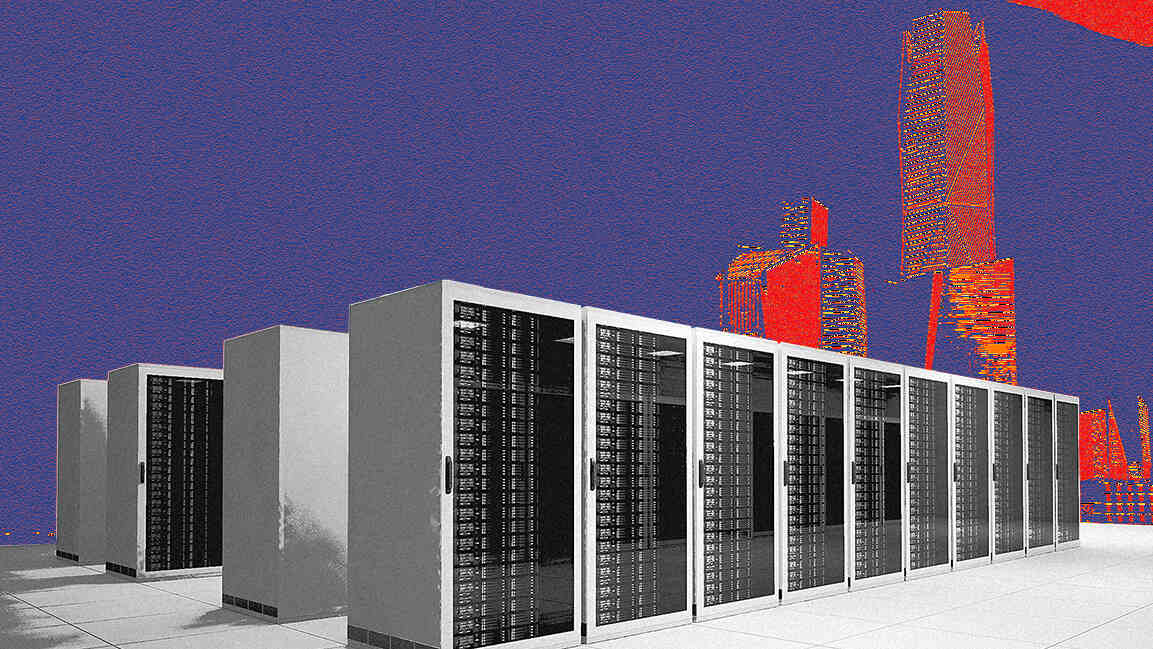- | 9:00 am
Why the Middle East can’t afford to ignore observability
Can businesses afford to miss what’s right in front of them?

Imagine launching a slick new app, a lightning-fast website, or driving “digital transformation”. Then something breaks. Customers complain. The tech team scrambles. And no one knows why. That’s what happens without observability.
Simply put, observability shows what’s happening inside systems—not just whether something works but why it’s working or failing.
As tech investment surges across the Middle East, such clarity is crucial. Cyber threats, cloud sprawl, and pressure to deliver flawless digital experiences are raising the stakes. Businesses are scaling fast, but without observability, they’re left guessing when things go wrong.
And in a region reimagining its future through tech, guessing isn’t an option.
OBSERVABILITY BEYOND TRADITIONAL MONITORING
Traditional monitoring tells you what is happening. Observability tells you why. While monitoring is reactive, flagging issues like increased CPU usage or unusual traffic, observability is proactive, providing deep context by correlating logs, metrics, traces, and user behaviors to identify patterns and root causes in real time.
This distinction is critical today because cyber threats are no longer simple anomalies, says Irina Artioli, Cyber Protection Evangelist at TRU Acronis.
She adds, “You can’t protect what you can’t see. Observability gives security teams the visibility and intelligence to move from passive alerting to active threat hunting.”
She shares a real-life example: a large online retailer experienced intermittent checkout failures. While traditional monitoring flagged increased latency, it took hours to identify the root cause. After shifting to an observability platform that integrated logs, metrics, and distributed traces, the issue became clear. A specific microservice was misrouting API calls during high-traffic periods.
“This deeper insight enabled the security and engineering teams to resolve the issue within minutes, dramatically reducing downtime and protecting customer trust and revenue,” she says.
Traditional monitoring spots symptoms often after damage is underway, says Ivan Milenkovic, Vice President – Cyber Risk Technology, EMEA at Qualys. “Observability, by contrast, digs deeper.”
It gives security teams granular insight into why a breach occurred, how systems behaved in real time, and precisely what actions can prevent recurrence. In a world dominated by sophisticated cyber threats and cloud-driven complexity, this kind of proactive clarity isn’t just useful, it’s essential.
Sascha Giese, Global Tech Evangelist for Observability at SolarWinds, points out that observability is often mistaken for a simple rebranding of monitoring. In reality, the two play very different roles.
He says, “If traditional monitoring is like checking your pulse, observability is a full-body scan. It doesn’t just tell you something’s off. It shows how every part of your digital anatomy is connected and where issues might be hiding or spreading.”
That distinction matters more than ever because technology no longer just supports the business—it is the business. With complex environments comprising microservices, APIs, and continually expanding attack surfaces, surface-level vitals are insufficient.
“Observability delivers deep, AI-driven insights into the entire IT ecosystem,” he adds, “helping cybersecurity teams understand not just what’s happening, but why, where, and what’s next. And in a world where a minor misfire in one system can cause a major outage, or worse, a breach, that kind of visibility isn’t a luxury. It’s a lifeline.”
And let’s not forget: when an anomaly occurs, it’s not always clear whether it’s a security or operational issue. Observability helps cut through that uncertainty.
THE URGENCY AROUND OBSERVABILITY
Cyber threats, cloud complexity, or leadership pressure?
Andreas Hassellöf, CEO at Ombori, says, “It’s the convergence of all three forces, but cloud complexity is the accelerant.”
As GCC enterprises adopt multi-cloud strategies, they create layers of abstraction that hinder traditional oversight. Meanwhile, cyber threats have shifted from blunt-force attacks to stealthy incursions exploiting configuration gaps and system interdependencies.
The pressure to ensure secure, resilient infrastructure is no longer just a technical issue.
Hassellöf says, “It’s economic and reputational.”
National initiatives like Smart Dubai are accelerating the adoption of advanced technologies in both the public and private sectors, making observability crucial for ensuring the performance, safety, and reliability of digital services. While cyber threats, cloud complexity, and leadership pressures are key drivers, Mohammad Almalik, CISO at Moro Hub, notes that rapid digitalization and targeted attacks heighten cyber risks for Middle Eastern enterprises.
He also highlights that leadership is under growing scrutiny to guarantee operational continuity and ensure compliance with increasingly stringent local and international standards.
For Bilal Baig, Chief Technical Officer, MMEA at Trend Micro, all three factors matter, but escalating cyber threats remain paramount.
The average cost of a data breach in the Middle East has risen to $8.75 million, nearly double the global average, highlighting the need for proactive cybersecurity measures.
Baig believes deep, real-time visibility gives enterprises a crucial edge, enabling faster threat detection before escalation. This, he says, aligns not only with the complexity introduced by cloud adoption but also with leadership’s rising emphasis on resilience.
THREATS DOWN, UPTIME UP
Observability accelerates threat detection and response by moving security teams beyond guesswork and into actionable insights, says Milenkovic.
Real-time visibility across infrastructure means threats can be identified earlier, vulnerabilities patched faster, and anomalies addressed before they escalate into costly downtime.
He adds, “By providing clarity on exactly where and how a breach could unfold, observability enables enterprises to act pre-emptively, rather than reactively. Hence, dramatically cutting downtime and safeguarding trust with stakeholders.”
Almalik agrees. Observability, he says, reduces both security and operational risks by enabling early anomaly detection, rapid root-cause analysis, and automated or semi-automated incident responses.
For example, when facing regional threats like ransomware or attacks on critical infrastructure, observability drastically shortens Mean Time to Detect (MTTD) and Mean Time to Respond (MTTR).
Baig adds that observability also provides real-time insights into system behaviors, enabling faster incident response and early detection of unusual patterns.
“By understanding how different system components interact,” he notes, “organizations in the Middle East can proactively address vulnerabilities and reduce the risk of prolonged downtimes.”
The numbers speak for themselves: Studies show that enterprises with full-stack observability experience 79% less downtime and incur 92% lower outage costs annually compared to those without it.
They also maintain a 27% lower observability budget and are 51% more likely to detect issues proactively, making observability not just a security advantage, but a smart operational investment.
A TOOL FOR BETTER COMPLIANCE AND GOVERNANCE?
The GCC cybersecurity market is projected to grow steadily, with a CAGR of 8.09% between 2025 and 2029, largely driven by government mandates aimed at safeguarding critical infrastructure and protecting personal data. As regulations grow more stringent, the demand for continuous visibility has become essential to help organizations achieve and maintain compliance.
Baig says, “By providing deep visibility into system operations, observability enables continuous monitoring, logging, and traceability—core elements needed to meet regulatory requirements. It allows enterprises to demonstrate compliance in real time, identify gaps proactively, and respond to audits with confidence.”
Frameworks across the GCC, such as the UAE’s Information Assurance Standards and Saudi Arabia’s Essential Cybersecurity Controls, demand real-time threat detection, incident response, and auditability.
Observability supports these pillars by delivering centralized, tamper-proof logging, contextual alerts, and historical data for forensic analysis, notes Artioli. It enables not only continuous compliance monitoring but also proactive control testing, helping organizations operationalize compliance, not just check boxes.
As regional regulators, particularly in sectors like banking, telecom, and healthcare, demand faster incident response and higher transparency, observability is evolving from a technical solution into a governance enabler.
Hassellöf explains, “It allows regional organizations to prove compliance, not just declare it. It also fosters a culture of transparency, where security policies are actively enforced and measured, not just assumed.”
As the push for stronger oversight continues, observability ensures compliance keeps pace with innovation.
AI AND AUTOMATION
AI is transforming observability from a reactive process into an intelligent ecosystem. By applying machine learning to telemetry data, Hassellöf believes that organizations can identify patterns that humans would never spot, such as subtle shifts in performance metrics that signal a brewing issue. Automation then enables rapid containment or resolution, reducing mean time to recovery from hours to seconds.
This is especially impactful in sectors like energy, aviation, and logistics, pillars of the Gulf economy, where a single system failure can ripple across supply chains. AI-driven observability enables predictive maintenance, anomaly detection, and even self-healing systems. In essence, AI turns observability into a strategic advisor, not just a monitoring system. It empowers enterprises to foresee, not just react.
This is evident in the UAE and Saudi Arabia, where national energy grids, shipping ports, and smart infrastructure are being digitized. AI-enhanced observability is a crucial tool for preventing service interruptions and securing critical operations.
AI and automation have also elevated observability, transforming it from descriptive to predictive and prescriptive, notes Milenkovic. Notably, AI-driven anomaly detection proactively identifies hidden patterns and subtle threats that human analysts might overlook. Automated remediation tools can contain and neutralize threats before they escalate.
He adds, “Real-world standouts include automated ransomware detection and response in banking, predictive downtime prevention in healthcare, and fraud detection in e-commerce, illustrating the immense value of intelligent observability at scale.”
AI and automation are redefining observability, taking it from static analysis to intelligent insight, according to Almalik. Machine learning models help detect anomalies in encrypted traffic, reduce false positives, and prioritize real threats. At the same time, it’s transforming how enterprises monitor and manage their systems, enabling predictive analytics and automated responses to detected anomalies.
According to Baig, “This evolution allows for faster root cause analysis and reduces the manual effort required for system monitoring.”
A COMPETITIVE DIFFERENTIATOR?
In fintech and digital health, the stakes are existential: one breach, one outage, and trust evaporates. Observability enables these sectors to guarantee security, availability, and regulatory compliance.
Artioli notes, “It’s the engine behind real-time fraud detection, SLA enforcement, and secure-by-design operations. For example, a digital bank with advanced observability can detect fraudulent API calls within milliseconds and auto-mitigate before customer impact.” In this sense, observability isn’t just a technical advantage but a business enabler and market differentiator.
For regional digital banks, insurtech startups, or telemedicine platforms, observability transforms operational excellence into market leadership. It allows them to guarantee continuity, build user confidence, and reassure regulators. Hassellöf adds, “In sectors where every second of downtime equals lost trust and revenue, observability is the foundation of digital credibility.”
However, it’s important to recognize that it’s not just fintech or healthcare where uptime is non-negotiable. Consumers’ digital expectations have never been higher. A bank designed to guarantee its services are always available will have a clear edge over a competitor that can’t, according to Giese.
SHAPING THE FUTURE OF ENTERPRISE RESILIENCE
As businesses in the Middle East integrate AI, IoT, and cloud-native architectures, observability becomes the glue that binds security, performance, and agility. In the future, observability and cybersecurity will likely converge into a unified, intelligent response system, one that continuously analyzes, adjusts, and defends without manual input.
However, the true strength of observability lies in its operationalization, says Hassellöf. As organizations scale and digital services become increasingly critical, it’s no longer enough to simply identify issues. Businesses must know who owns them, their remediation SLAs, and how they’re tracking progress. This operational dimension will define the future of resilience, he adds.
Enterprises that embrace observability will also have a profound advantage. They can achieve genuine resilience through visibility, intelligent risk management, and continuous improvement.
The era of hoping threats pass by unnoticed is over. Observability allows enterprises to understand exactly what’s happening, transforming security from a cost center into an invaluable competitive asset, explains Milenkovic. This clarity, combined with rapid innovation in AI and automation, makes observability indispensable for organizations committed to long-term survival and success.
Additionally, with observability, resilience becomes quantifiable, says Artioli. It supports adaptive defense models, where systems learn from incidents, and recovery is orchestrated with precision. Organizations capable of fully “observing” their IT ecosystems can more effectively manage risk, optimize resource allocation, and drive innovation, further reinforcing their competitive advantage and digital resilience.








































